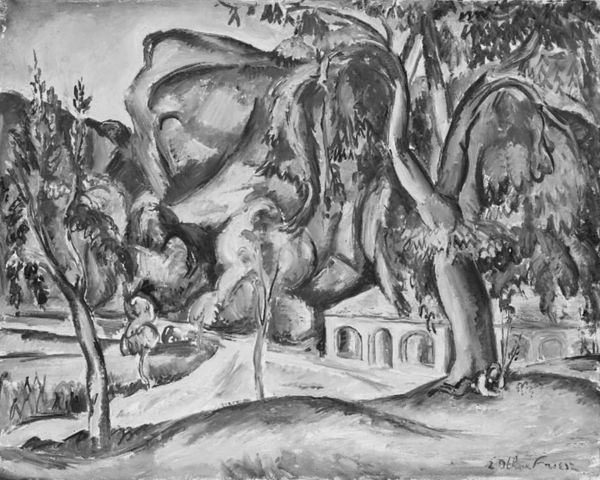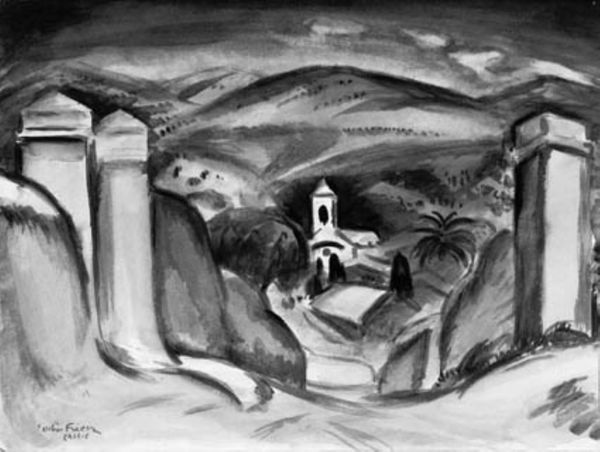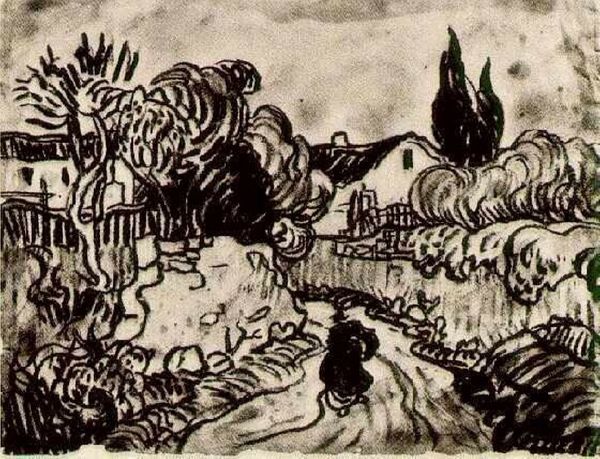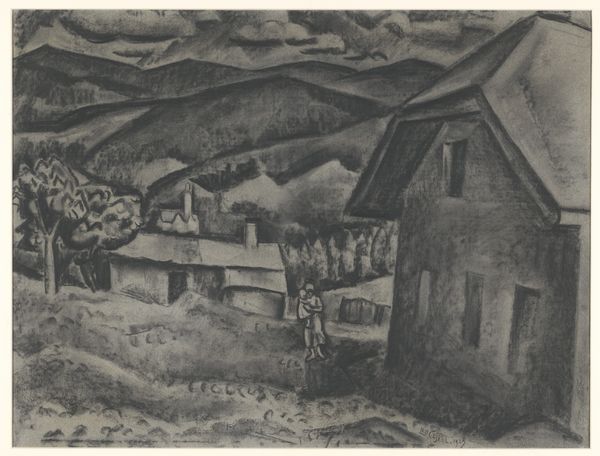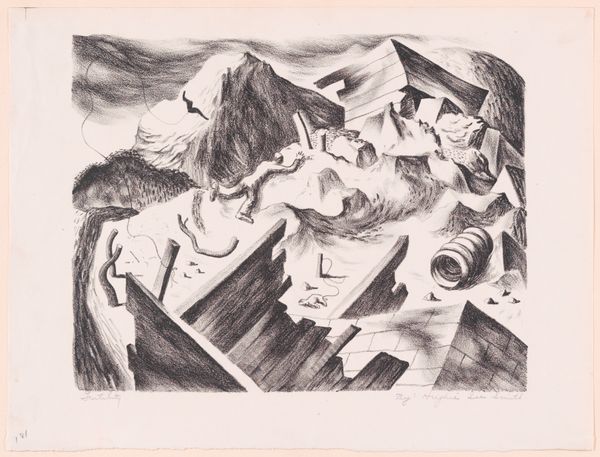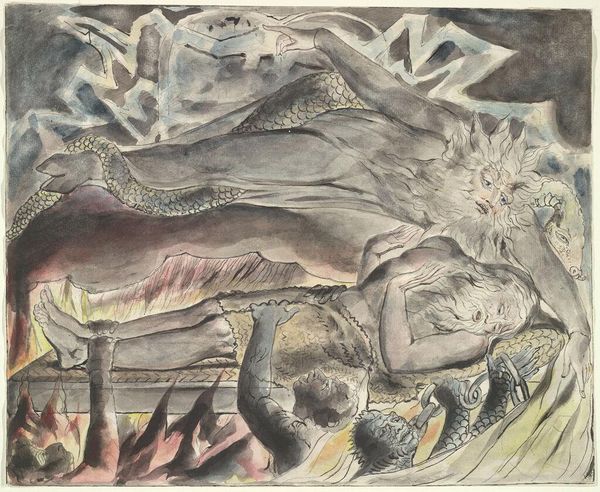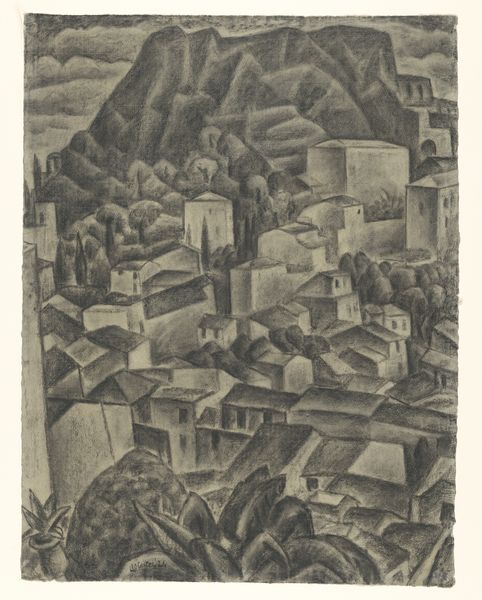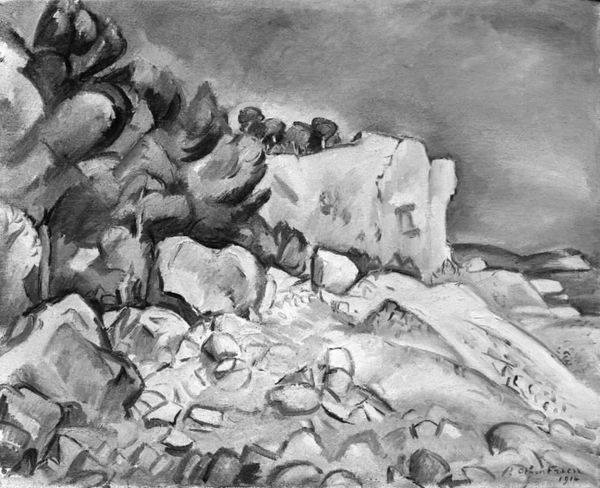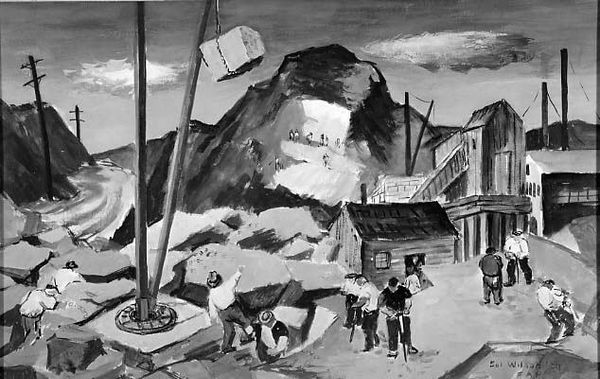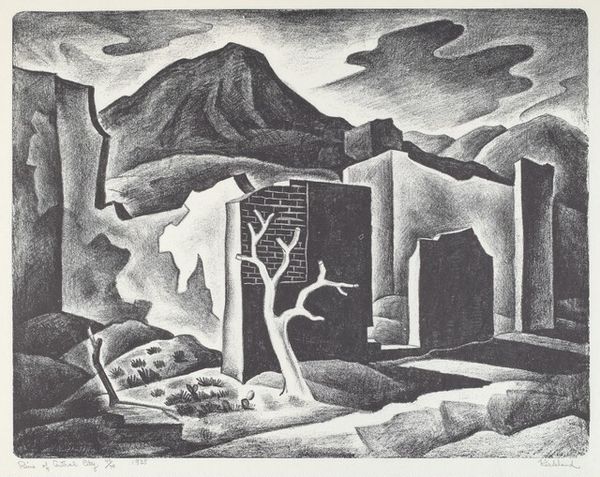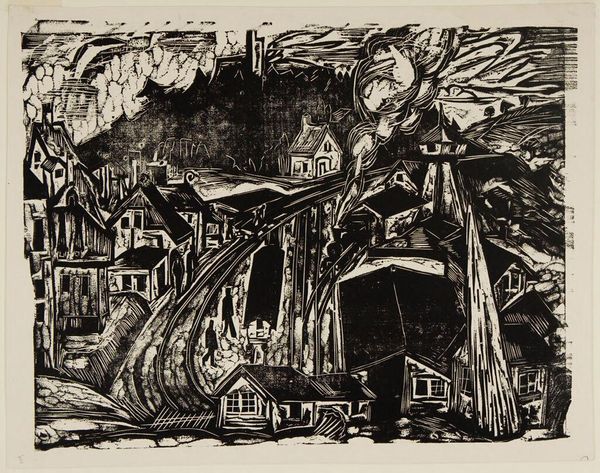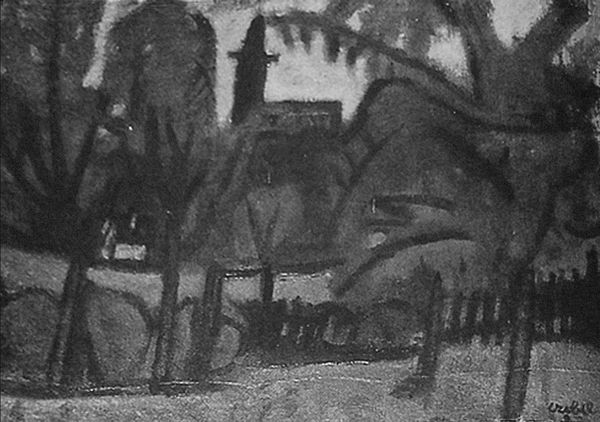
drawing, plein-air, charcoal
drawing
plein-air
landscape
charcoal drawing
expressionism
charcoal
charcoal
Dimensions: 340 mm (height) x 492 mm (width) (monteringsmaal), 250 mm (height) x 339 mm (width) (bladmaal)
Curator: Immediately, I'm drawn in by the charcoal smudges, like looking through a rain-streaked window. There’s a starkness, a simplicity in the landscape that's also incredibly moody. Editor: Indeed. What you are taking in here is Othon Friesz's "Skråningen ved Toulon," a charcoal drawing he created in 1914. He captures, with an almost palpable energy, a slice of life in the South of France. It shows how plein-air captured this essence. Curator: Yes, Toulon! It feels like that moment just before a storm breaks. The sky seems to press down on those boxy houses and… are those pines? Everything rendered with such economical strokes, as if he were racing against time itself. Or perhaps a sense of urgency knowing the first World War was beginning. Editor: Fascinating connection! It’s worth noting that Friesz himself served in the war shortly after making this drawing. This landscape carries an intriguing tension. The Cubist influences are visible in the geometric simplifications of form, creating an order underlying the picturesque scene. It is more that an expressionist outburst with underlying structures. Curator: You are right, though there’s something visceral about the marks. It feels like more than a purely intellectual exercise. Did this artist engage with philosophy and art as a whole to come to an emotional representation? He certainly was trying to show feelings in a way I admire in this work. Editor: It's difficult to say if there was a set idea. During his lifetime, Friesz moved through Fauvism and onto a more classically influenced post-impressionism. In art schools, there was a growing sense of an evolution of style toward Fauvism, away from what was deemed classic, as an expression. This captures how Friesz was still looking at structures. Curator: Knowing that historical path adds another layer of interest. You almost trace the struggle between capturing raw emotion and trying to fit into an established tradition. Like he is rebelling while respecting the older traditions and schools. I sense it within those dark charcoal lines. Editor: Absolutely. The work becomes a site of artistic negotiation between emotion, historical moment, and emerging aesthetics. Thank you for shedding some insight onto this very fascinating drawing. Curator: And thank you for the historical framing. Together, we unearthed the emotions in these charcoal traces!
Comments
No comments
Be the first to comment and join the conversation on the ultimate creative platform.
